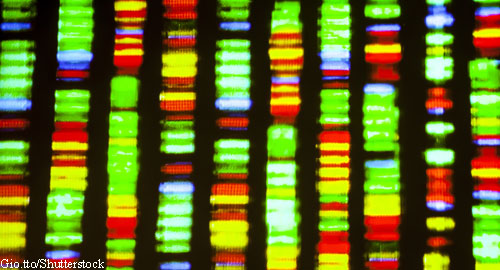 Combining experimental and bioinformatic strategies is allowing investigators to dig deep into human genetic data to uncover the mechanism of rheumatic diseases.
Combining experimental and bioinformatic strategies is allowing investigators to dig deep into human genetic data to uncover the mechanism of rheumatic diseases.
Research published in Nature Genetics from the laboratories of Peter A. Nigrovic, MD, and Soumya Raychaudhuri, MD, PhD, provides new methods developed in the investigators’ labs at Harvard Medical School to successfully identify genetic variants responsible for common autoimmune diseases, including rheumatoid arthritis (RA) and juvenile idiopathic arthritis (JIA). Both studies employ distinct approaches to the same challenge: identifying non-coding causal variants.
A Pathway to Rheumatic Disease Origin
Both studies address how to make sense of genome-wide association studies (GWAS). GWAS in RA and JIA have implicated more than 100 chromosomal loci in the genesis of these diseases, but in most cases how these loci predispose to illness is unclear.
“Most GWAS ‘hits’ contain multiple genes, and in the large majority of cases none of these candidates contains mutations that alter protein sequence. In other words, most GWAS signal arises through regulatory rather than coding variants,” Dr. Nigrovic explains. “Unfortunately, each locus contains many genetic polymorphisms that could potentially have regulatory function, leaving related disease mechanisms obscure.”
To find these non-coding variants, Dr. Nigrovic’s lab developed an experimental approach termed SNP-seq (single nucleotide polymorphism-next generation sequencing). Non-coding variants are engineered into a library of hundreds or potentially thousands of DNA constructs, which are then screened for the ability to bind transcription factors and other regulatory proteins via type II-S restriction enzyme protection.
Using this technique, Dr. Nigrovic and his colleagues tested variants within the CD40 locus, previously associated with RA risk by Dr. Raychaudhuri, to identify three linked non-coding variants and their associated regulatory proteins.
“We then went on to test more than 1,200 variants from 27 loci associated with JIA, identifying promising candidate variants, including new regulators of the immune gene STAT4,” Dr. Nigrovic says. Their work was published in the August 2018 issue of Nature Genetics.1
Dr. Raychaudhuri’s lab employed a different approach, he explains. Using DNA fine mapping combined with Bayesian bioinformatics, they pooled GWAS data from RA and type 1 diabetes to identify genetic polymorphisms that were especially likely to represent causal variants. These variants were confirmed experimentally by the Nigrovic lab, which yielded new insights into how immune-mediated disease arises through genetic polymorphisms, including via specific non-coding variants in MEG3, CD28-CTLA4 and IL2RA. This second approach was released online in Nature Genetics in October.2
“We know that it’s in the non-coding variants where we need to be looking for disease mechanism,” Dr. Nigrovic says.
With successful new ways of identify noncoding variants in the human genome, Dr. Nigrovic says we can begin to see how genes known to be associated with rheumatic diseases work. This insight will uncover new pathways that may lead to transformative new perspectives on rheumatic disease activity.
“Much like doctors treating cancer no longer think of disease solely in terms of anatomical location, such as lung or ovary, we are uncovering new ways to see rheumatic diseases beyond disease classification as RA or a subtype of JIA—instead we can think more about how a rheumatic disease is driven by a gene pathway,” Dr. Nigrovic explains.
Implications for Care
Although this current understanding of genetic activity for rheumatic diseases is far from immediate therapeutic application, developing an understanding of genome-associated disease mechanisms may provide a road map for future therapeutics, including repurposing an already developed drug.
Example: One of the proteins Dr. Nigrovic’s team identified in a prior study of the RA-associated gene CCR6 is a protein being targeted to treat ovarian cancer.3
“If we can identify a cellular pathway that is engaged or suppressed, it’s possible that we can screen existing compounds to target the same pathway that genetic investigation is telling us is connected to rheumatic disease,” he suggests.
Specific to JIA, Dr. Nigrovic says pediatric manifestations of rheumatic disease may provide a rich area to investigate disease biology due to the stronger genetic burden often observed with early-onset disease. However, he says genetic disease pathways in adults are also similar biologically. His lab has recently received funding to explore the genetic underpinnings of some of this biology, and he is in the early stages of applying genetic investigation approaches to lupus.
Carina Stanton is a freelance science journalist in Denver.
References
- Li G, Martínez-Bonet M, Wu D, et al. High-throughput identification of noncoding functional SNPs via type II S enzyme restriction. Nat Genet. 2018 Aug;50(8):1180–1188.
- Westra H-J, Martínez-Bonet M, Onengut-Gumuscu S, et al. Fine-mapping and functional studies highlight potential causal variants for rheumatoid arthritis and type 1 diabetes. Nat Genet. 2018 Oct;50(10):1366–1374.
- Li G, Cunin P, Wu D, et al. The rheumatoid arthritis risk variant CCR6DNP regulates CCR6 via PARP-1. PLoS Genet. 2016 Sep; 12(9): e1006292.

